Inorganic chemistry
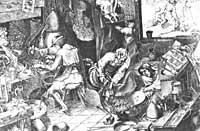
XVII. In the mid-twentieth century alchemy began to suffer the first severe attacks, in which Cartesian thought influenced a lot. The men of science, immersed in this thought, did not recognize that a substance could be more perfect than others. The Cartesians thought, for example, that metals, once created by God, would continue with their properties forever and ever. Therefore, the changes of the alchemists were nothing but fainting, so they should be rejected.
On the other hand, those initial chemicals, leaving aside esotericism, began to work what we know today as industrial chemistry. That is, with essays above magic and supernatural logic, Cartesian thought offers a methodology to the immutability of the elements of nature that were discussed at that time.
In this environment some alchemists, at first, were incorporated into the new current. Glamber, for example –1603-1668–, abandoning alchemy, left the new path. Kunckel, his contemporary, for the first time rationally denied the properties of the “philosopher’s stone”. But meanwhile others (Helvetius, Ashmol, etc.). a long one), addressed the traditional alchemy. In short, the XVIII. In the early 20th century traditional thinking was still alive, but the work of innovators began to give their first discoveries.
One such discovery, so to speak, is that of gases. The study and chemical knowledge of gases, not seen in the face of solids and liquids, was very late. The alchemists knew well the difficulty of manipulating gases. In ammonia, for example, although its smell is strong and penetrating and easily released into the fermentation of urine, XVI. They did not notice until the end of the 20th century.

The phenomenon of combustion too, XVII. Until well into the twentieth century it did not begin to be studied. This era, called “the era of gases”, is the 18th century. It extends until the end of the 20th century and is one of the richest stages of chemical science. To begin with, Becher —1635-1602— distilled coal, obtaining tar by condensing “coal gas” and “fumes.” This gas is, together with air, one of the first studied, since, despite being present in the burning or breathing of sulfur or wood, these processes were well known and little studied.
The first gas studies were conducted by Van Helmoto, 1577-1644. He also adapted the word, the gas. He drew the word from the Greek word “chaos” proposed by Parazeltso. Previously the concept of gases was expressed with the word air, since this was the only gas investigated. Therefore, when the presence of different gases was detected they were called with the word air and according to their properties. Therefore “fixed air”, “flammable air”, etc. they knew each other. Van Helmoto, despising the word air, separated three very similar gases: the “carbon gas” that appears in the combustion of charcoal, the “forest gas” that appears in the fermentation of wort and the “soft gas” of the corruption of organic matter. On the other hand, he distinguished between air, gas and steam.
Also to be mentioned is Robert Boyle, 1672-1691, Robert Hooke, 1635-1703, and John Mayow, 1641-1679. The three realized that air was necessary for combustion. Boyle first takes gas in a previously flooded hood or bottle. Mayow discovered the affinity between combustion and animal respiration.
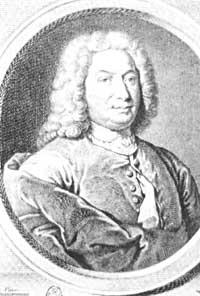
They knew some acids, alkalis and salts of the alchemists, but their research dates back to the 18th century. They would have to wait until the 20th century. XVII. For example, the salts known in the 20th century were those that spontaneously appeared in nature: “green vitriol” (iron sulfate), “blue vitriol” (copper sulfate), “sea salt” (sodium chloride), “lighting” (double sulfate of aluminum and potassium), “nitrates” and “arrows” (potassium nitrate and sodium), “white magnesia” (magnesium base carbonate) and “limestone” (calcium carbonate). But, XVIII. Until the 20th century, for example, they did not distinguish between “potash” and “soda”.
Metallic minerals were only used as a source of metals and were not known if they were oxides or salts. However, XVII. During the eighteenth century salts were studied quite well and in that work Glauber —1604-1670— occupies a special place.
In this atmosphere XVIII. We entered the 20th century. In that century the “flogisto” theory was in effect. Unfortunately XIX. This theory, which lasted until the nineteenth century, was an obstacle to the development of chemistry, but we cannot ignore it. According to this theory all bodies were a combination of three elements: the combination of a vitreous earth principle, a terrible and comburent earth, the so-called "flogisto". This flogisto participated in all the materials that are lit (wood, sulfur, oil, phosphorus, etc. ). When these heat up, they lose the light-giving phlogist and run out of phlegm, they become amorphous dust. However, once this powder is treated with coal, they acquire a lot of phlogist and pass back to their initial state.
All this theory appears in Stahl’s book entitled “Experiment, observationes, animadversiones chymicae and physicae”. This book was published in 1697. But, XVIII. In order to express the phenomena seen throughout the 20th century, the concept of flogisto had to endure many appendices and had to be attributed contradictory properties. Finally, Lavoisier discarded the theory of flogisto laying the foundations of current chemistry.
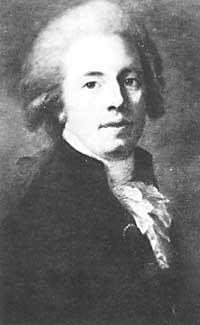
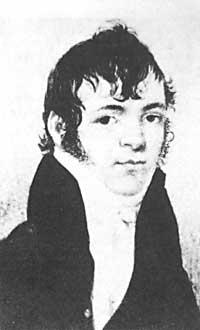
Gas Chemistry S. Hales — 1677-1761 — had its importance. He, apart from ecclesiastical positions, cultivated science. Among other things, it introduced quantitative difference in gas tests. In his book titled “Vegetable statiks” (published in 1727) it is said that air was an element and that it was blinded by plants to feed. Through pyrogenation he achieved a series of gases and, apparently, without him discovering it, obtained oxygen, nitrogen, carbon dioxide, nitrogen and some of its oxides. The other names to mention are: G. F. Rouelle (1703-1770) (professor of Lavoisier and Diderot), H. Cavendish (1731 1810), C. W. Scheele —1742-1786— (after overcoming a thousand obstacles, he could not use money or balance in his essays).
In 1770 he isolated the “flammable air” (hydrogen), two years later nitrogen and the following year the “fire air”, oxygen. This work was published in 1777, three years after Priestley. So there have been some discussions about the discovery of oxygen. Finally, we have the Priestley, 1783-1804. Son of a low-class family, he was a Protestant pastor, but soon devoted himself to science. In 1772 his works were published, explaining the “fixed air” that appears in the burning, researching water solubility and discovering the “artificial seltz water”. For his part, without knowing Scheele’s work, he identified and isolated the “inrespirable air”, that is, nitrogen. In a report sent to the Royal Society in 1775, he discovered that there was “air of life”, that is, oxygen (according to Lavoisier’s name).
In the area of acids, alkalis and salts again we have to mention Rouelle. He first published the concept of salt composition. It showed that some substances (limestone or white magnesia) accepted as simple bodies until their time were actually salts. Salt established that it could be neutral, acidic and basic and called these last alkalis. Includes Joseph Black, Baumé, etc. a long period of time introduced its advances in this matter.

Metals also had a big boost in the 18th century. In the 20th century. Brandt found cobalt, Manggraf zinc, Wood platinum, Cronstedt nickel, Gahn manganese, Hjelm molybdenum, Müller telurio. In the Basque Country of 1784 the brothers Fausto and Juan José Elhuyar at the Seminary of Bergara isolated for the first time wolfram with the cultivated mineral known as wolframite.
Organic chemistry took a big step in this century. The innovation of great importance was the research of bodies extracted from plants and animals: starch, sugars, fats, piglets, etc. In 1720 the ether was synthesized and although initially the method was preserved without indicating, it was published in 1730.
XVIII. In the second half of the 20th century chemistry was full of contradictions: the current theories did not coincide with what was in reality. The existence of gases, the combustion data, the properties of the empty bodies found and so many other things, had no logical expression. One could see the need for a synthesis work, that is, the congestion and composition of all that was known in this field, which would be done by the most prestigious man in the field of chemistry of this century: Antoine Laurent Lavoisier.
Lavoisier was born in 1743 in Paris with a good family. After his studies, he worked in chemistry with body and soul, in 1785 he entered the Academy and four years later he was appointed director. In 1793 the Academy was closed by the revolutionaries and the following year its leaders were denounced. Instead of fleeing Lavoisier, he continued his research relying on the Convention and its scientific reputation. After being judged by the revolutionary court and proclaimed by the judge "Revolution Needs No Sages," he condemned to death. On 8 May 1794 one of the greatest men in chemistry was killed.
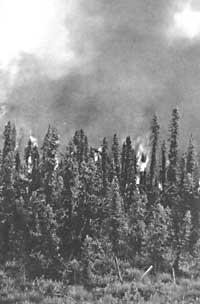
To begin with, Lavoisier researched and summarized all the chemical science that came to him. Both in the middle of the century and without questioning the existence of the flogisto, its usefulness is discussed and soon begins to think that its character was of a body (hydrogen or). Therefore, in any case, it would be like any other element.
Due to the success of mathematics in physics, in that century a trend was imposed among the sciences: which should also be introduced in chemistry. On the other hand, it was admitted that Newton's gravitational theory was fulfilled in all fields and, therefore, it was thought that it should guide the mechanism of chemical reactions on a molecular scale.
Before finding oxygen, Lavoisier observed the weight changes that occur in combustion and metal calcinations. He thought that part of the air was fixed in the metal as heat. Once the oxygen was located, it continued with its work and demonstrated that the weight gain of the metal was equal to the weight reduction of the air used in the trial. With this, and after demonstrating that water does not transform into land (that is, that the flogist did not weigh and studied some properties of oxygen), Lavoisier concluded that the theory of flogist had to be ruled out, while proposing a theory on combustion and respiration.
In this theory it is said that oxygen participates in all combustions, but the existence of caloric was accepted. The caloric was between the molecules of the fraction or substance. This fluid should have very special characteristics. Among other things, it would be outside the influence of the three fundamental forces that endured all other matters, that is, traction, repulsion and atmospheric pressure would have no influence on it. However, despite not being fully successful in this field, it gave great importance to heat treatment, which was a great boost.
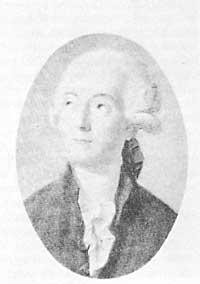
Lavoisier wanted to enter the field of chemical mathematics, but found an obstacle. From the mathematical point of view, while matter was to be divisible to infinity, in reality it was not for him: while molecules were divisible, atoms were not. Lavoisier accepted this without proof. Therefore, and in short, matter was divisible, but only to a limit, and each substance had a different type of molecule. Unfortunately, due to the level of the attempts of the time, he had to recognize: ... our attempts are still far from seeing the divisibility of matter.”
Clarifying the concept of matter, Lavoisier entered the field of the “element”. Of course, the concept I had was different from the one I currently had, but we can say it was a first approach. With his words: “For a matter to take the title of element, it is not enough that it is simple, indivisible or inseparable. For this it has to be abundant and widespread in nature and participate in the composition of many bodies. Therefore, even if gold were a simple substance, it will not be said to be an element.”
Apparently, in it the concept of Aristotelian element remained firm, but, however, some bodies accepted up to the time as elements, such as air (because different types of air were known), earth or water (which was known as a combination of oxygen and hydrogen) would not be elements. But the fire continued, as Lavoisier said, “caloric.” However, chemistry was then enriched with many real elements: oxygen, hydrogen, nitrogen, sulfur, carbon, etc.
For his part, Lavoisier in his work “Traité élémentaire de chimie” used chemical nomenclature, endowing chemistry with this rich tool. To this we must add that he introduced an experimental method structured in the field of chemistry. Therefore, from a series of random observations made by chemistry, the existence of certain different phenomena and certain manifestations that were to be agreed with previously accepted and desired unfounded theories, Lavoisier became a true science.
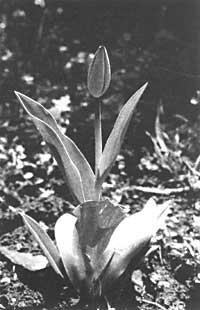
After seeing the existence of oxygen, Lavoisier demonstrated the basic chemical affinity between combustion and respiration. That is, after being able to measure the actual amount of oxygen taken in the breath and the amount of carbon and aqueous anhydride that appear in this process, it could give a first and true expression of the phenomenon that occurs in the lungs.
Lavoisier's ideas were not immediately accepted and many chemists, especially technicians, followed with their ancestral ideas. However, they gradually spread in France, Germany or Sweden, in a word throughout Europe and, after their death, when the “Académie des Sciencies” in Paris made them their own, they were accepted faster than fast.





